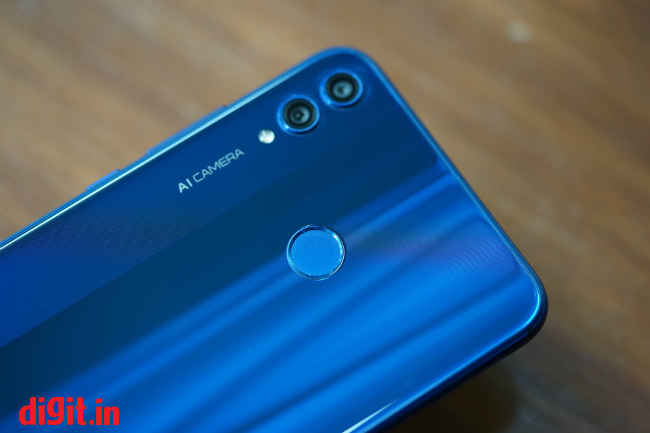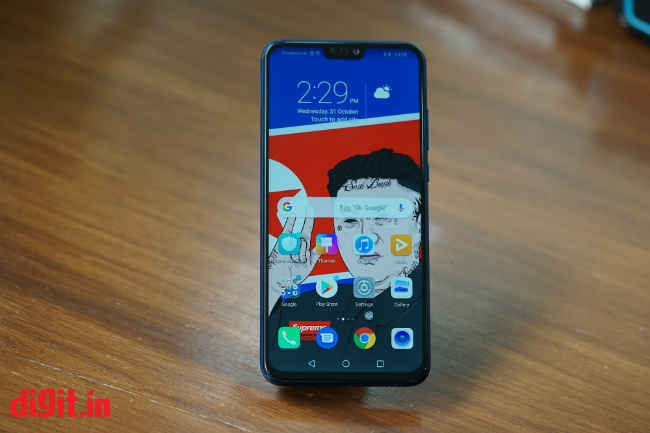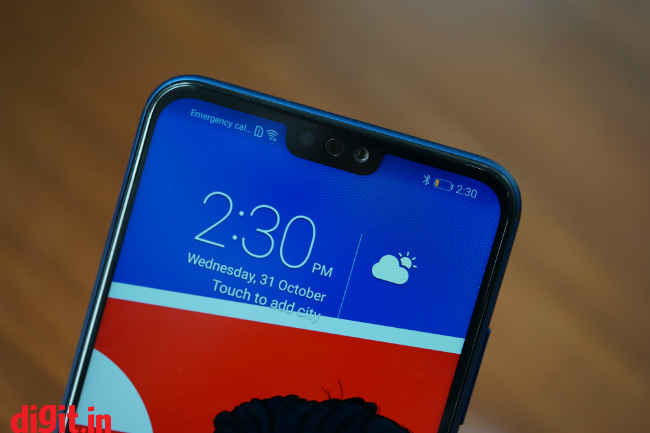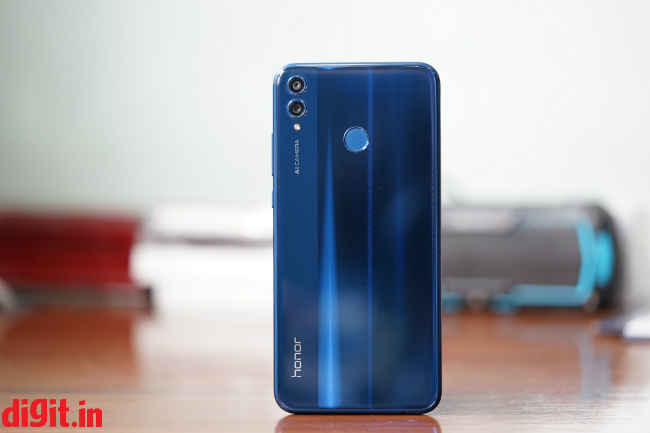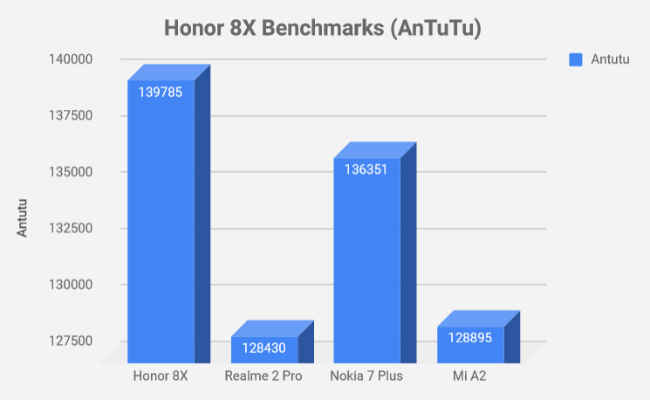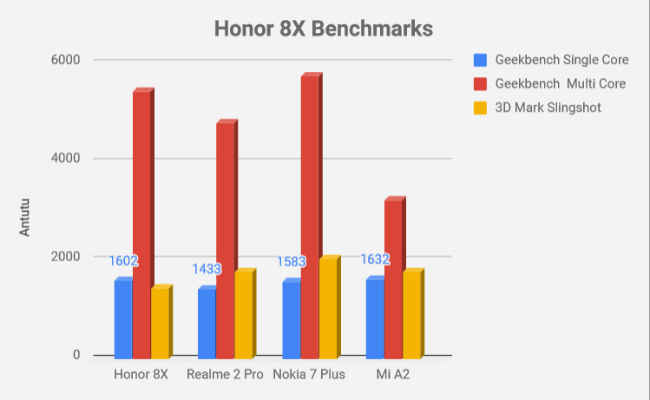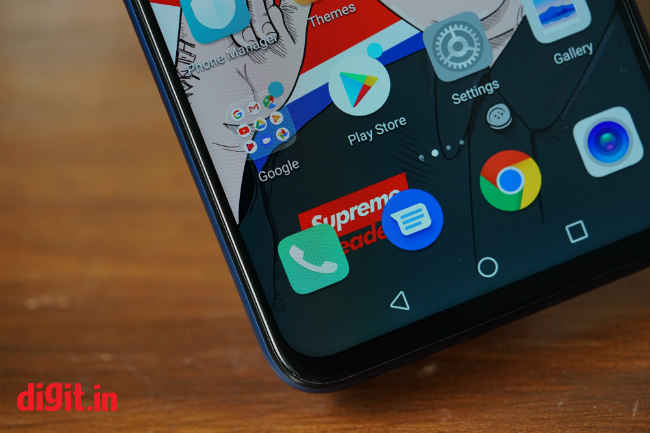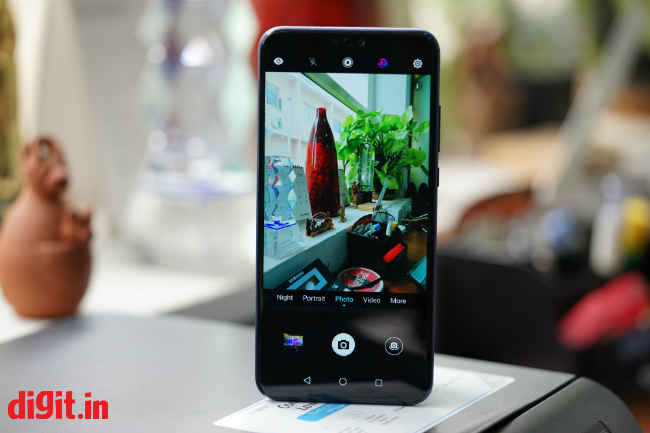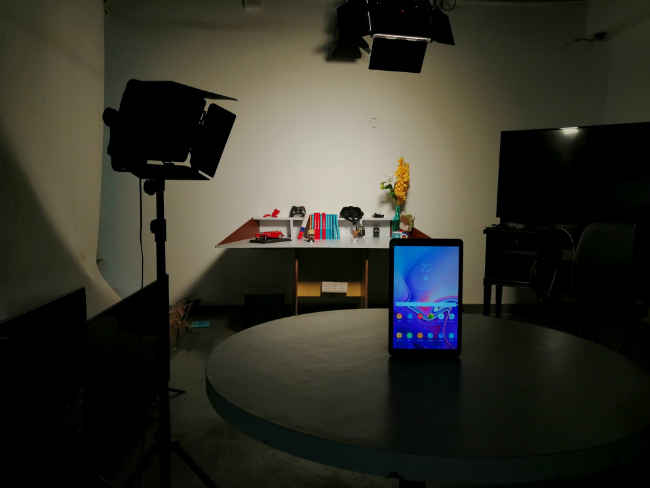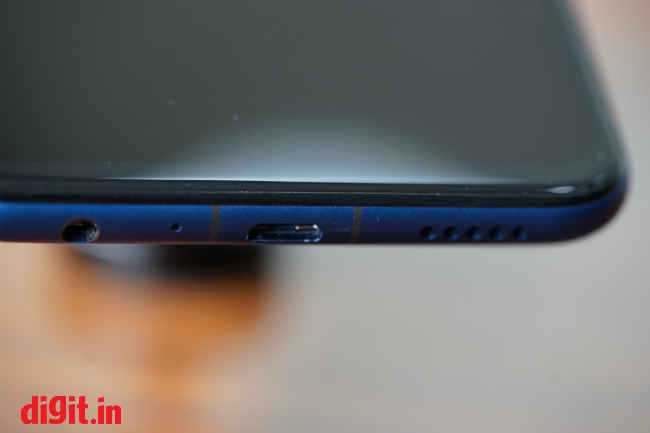Honor 8X Review : Big screen, big problems
The Honor 8X is a big-screen phone with an affordable price tag. It’s a good experience to watch videos on it, play games, but the phone itself is quite unwieldy. It’s glossy design and generous amounts of glass might did put me off, but it’s up to you, the buyer, to decide whether you want something that looks good but is quite delicate at the same time. The performance in general is quite commendable but the UI, like all Honor and Huawei phones aren’t the best, aesthetically speaking. As for the camera, it can take decent photos in daylight, but expecting a good low-light performance from it is a bit too much.
Design and build
One look at the Honor 8X and you can tell it’s made by Huawei or Honor. It has the signature glass design with gradient colours, although this time, Honor attempted a dual-tone finish. One-fourth of the rear panel has a lighter shade of blue while the rest of the back is shiny dark blue. To be honest, I thought it was a manufacturing defect when I picked it up. The colours do shift when you change the angles but the distinction is very clear. The panel on the back is glossy, smudge prone and has a uniform texture despite using two colours. The effect has been hailed by others as good, and I might be one of the minority to not like what Honor has done with the 8X. You do get a TPU case bundled in the box which will offer some protection to the glass back. The fingerprint sensor dips lower in the body and is easy to find while holding the phone upright. The Honor logo and the camera information are all written in landscape mode, indicating that it’s meant to be used in that orientation, like how it is on the Huawei P20 Pro (review).
Turn it around and the screen takes precedence. The Honor 8X perhaps has the largest display in the sub-15K price segment. It’s significantly wide and cannot be used by just one hand. The panel also takes up most of the real estate up front with a 91 percent screen-to-body ratio. The bottom chin has been shaved off even more making the screen-to-body ratio one of the highlights of the phone.
Despite a glass body, the phone is built quite sturdy. The aluminium frame housing the glass panels on both sides feel strong and there’s no flex whatsoever. The corners are also rounded off to offer a better grip. By default the screen also adapts to the rounded corners, but if you choose to hide the notch, the symmetry gets messed up completely. The camera on the back juts out of the body with sharp edges. If you carry a second device in the same pocket as this phone, there’s a chance the camera bump would scratch the other device.
Display
The Honor 8X’s panel is a massive chunk of glass. Sitting at 6.5-inches measured diagonally, it’s much more than what the Redmi Note 5 Pro and the Realme 2 Pro offer. The larger screen size is abetted by the notch on top of course, which incidentally isn’t all that big (not Pixel 3 XL-like big, I mean) and a smaller chin. It may be 7.8mm thin, but the width of the display means it’s almost impossible to use with just one hand. The elements on the screen; Icons, texts, images, and the likes all appear quite large. As a result, you’re essentially reading the same amount of text you’d read in a smaller 6-inch panel, unless you decide to shrink the size of the text. Also, it’s easy to register accidental touches while trying to reach to the other end of the panel.
The 6.5-inch IPS LCD panel itself is quite bright and vibrant and was easily legible under direct sunlight. By default, the panel uses a vivid colour mode that ups the contrast and saturation to a great extent making content appear richer than it actually is. It’s problematic if you’re planning to edit photos or videos in your phone, but watching content from Netflix and YouTube is a good enough experience. The extra screen real estate also makes things more immersive. It’s also a good display to play games like PubG Mobile on, where a bigger screen gives an advantage.
Performance
A big-screen phone demands stable and fast performance and the Honor 8X relies on a HiSilicon Kirin 710 SoC for that. It’s coupled with up to 6GB RAM and up to 128GB storage. The unit we received for review has 4GB RAM and 64GB storage though, and considering it performs well enough in this configuration, the higher variant will only be better, if not the same. It’s also the first time Honor has used the Kirin 710 SoC in a mid-range phone and could be an indication that it’s finally retiring the aged Kirin 659. The Kirin 710 is a 12nm based chipset with an octa-core configuration. The performance cores can go all the way up to 2.2GHz which is a little higher than what the Snapdragon 660 can clock. Benchmark reports take this into account. Honor also offers a dedicated slot to expand storage which is much welcome. Thankfully, it is a standard MicroSD card slot and not a propreiatry Nano memory card slot like the one on the recently announced Huawei Mate 20 Pro (first impressions).
On AnTuTu 6.0, the Honor 8X scored 139785 which is higher than the Snapdragon 660-powered Realme 2 Pro’s 128430, while on Geekbench Single and Multi core tests, the Honor 8X scored 1602 and 5435 respectively, which is again significantly higher than what the Snapdragon 660 smartphones score. On 3DMark’s Slingshot test, the Honor 8X scored 1437, which is the only place where the Kirin 710 falls behind as compared to the Snapdragon 660. It’s a clear indication that Huawei’s new chipset is quite ahead of Qualcomm’s top-of-the-line mid-range chip in the market right now. But does it lead to a boost in performance?
The Honor 8X works perfectly fine — Smooth transitions, relatively quicker app launches, and negligible stutter while scrolling in apps like Facebook that continuously process data as you scroll down the timeline. Multi-tasking is also good enough although EMUI’s aggressive RAM management tends to kill apps that are active in the background. Essentially, if you have minimised Amazon Prime Video to reply to a message on Facebook, and then go back to watching, you’ll have to start from the main screen which is a bummer.
As for gaming, the benchmark did suggest the GPU on the Kirin 710 isn’t really as good as what Qualcomm offers in the Snapdragon 660, but Honor leverages the GPU Turbo technology to improve gameplay. However, GPU Turbo is only restricted to selected games. Thankfully, that includes PubG Mobile which is what most people are playing these days. It runs on medium settings but the frame rate is stable enough with minimal lag.
Software
The Honor 8X may be a good looking smartphone from the outside, but EMUI 8.2 on the inside takes away from the beauty. The Android 8.1-based UI has large icons which aren’t aesthetically pleasing. It comes running the September 2018 security patch which is a sign of good things. Honor did promise the phone will be updated to Android 9 Pie but they didn’t share a timeline. There’s also NFC and Face Unlock (it’s a bit slower than the physical sensor and not that secure) as well. The Honor 8X comes preloaded with apps like Netflix, Messenger, Instagram, Facebook and more. It depends on your usage whether you’ll call it bloatware, but they can all be uninstalled. The phone also supports gesture-based navigation that seems to be a rip-off of iOS’ gestures, but aren’t as intuitive. It has a steep learning curve and when the gesture navigation is turned on, the keyboard shifts down towards the bottom of the display and that leads to a lot of typos.
The software has a smart booster to free up RAM and clean junk files, a gaming mode to free up resources for games, and a bunch of Honor-centric apps that unfortunately cannot be uninstalled.
Camera
Honor’s cameras have proven to be the highlight of their product. They are adequately blessed with AI capabilities that, depending on where you stand, can augment or ruin the photos the phone takes. It’s the same for the Honor 8X. There is a 20MP camera with f/1.8 aperture combined with a 2MP depth sensor. The camera on the back is capable of taking AI-enabled portrait shots where you can vary the depth of field in real-time. Up front is a 16 MP f/2.0 sensor which can take selfies with portrait lighting effects.
The camera quality isn’t much to write home about. It’s what we have seen in other Honor and Huawei phones in that price range over this year. Oversaturated colours, high contrasts and overall a photo that looks very artificial. Turning the AI mode on recognises what you’re shooting (plants, sunsets, buildings, etc.) and applies an additional layer of saturation on it.
Daylight
The Honor 8X, like most phones in the mid-range segment, can take good photos when there’s ample light. The samples we shot for the phone aren’t really the best considering how Delhi gets shrouded under a thick blanket of smog during this time, but based on what we saw, it’s likely to deliver decent results. The white balance is slightly off the mark though with a tendency to use a warmer white balance in photos shot during the day, that is if you have the AI mode turned on. The shadow regions also lose out on the details and the camera takes a slightly longer time to focus. Frankly, the Xiaomi Redmi Note 5 Pro seems to do a better job at taking photos. If you’re considering to buy the 6GB variant, you can also look at the Mi A2 which has a fantastic camera.
Indoors
When indoors, the camera tends to prefer the source of light for metering, making the frame darker. The AI mode here tries to recover details and manages to do that just barely well enough. When exposing for things away from the source of light though, the Honor 8X does light up the scene but the source of light is blown out.
Lowlight
Moving on to low-light, this is where the camera struggles. Keeping the AI mode turned on will let the camera recognise you’re shooting a low-light shot and it’ll effectively attempt to brighten up the scene. In the end, it just bumps up the ISO and slows down the shutter speed without taking care of the stabilisation. You have to keep the phone pointed at the scene for longer and a slight shake ruins the photos.
Battery
The Honor 8X has a rather large 3,750mAh battery. But when you take the large 6.5-inch panel into account, the battery doesn’t seem to be all that big. Nevertheless, it got us through the day easily. We’re yet to run the PCMark Work 2.0 test on it and will update this review once the results are in. But it seems like the battery is just about enough to last the day if you are a medium to heavy user. Playing games like PubG though will drain the battery much faster and you’ll have to plug it in by around 7PM in the evening.
The phone charges using a microUSB port and a bundled 10W charger which tops up the battery in around an hour and a half.
Bottomline
The Honor 8X is a big-screen phone with an affordable price tag. It’s a good experience to watch videos on it, play games, but the phone itself is quite unwieldy. It’s glossy design and generous amounts of glass might did put me off, but it’s up to you, the buyer, to decide whether you want something that looks good but is quite delicate at the same time. The performance in general is quite commendable but the UI, like all Honor and Huawei phones aren’t the best, aesthetically speaking. As for the camera, it can take decent photos in daylight, but expecting a good low-light performance from it is a bit too much.

